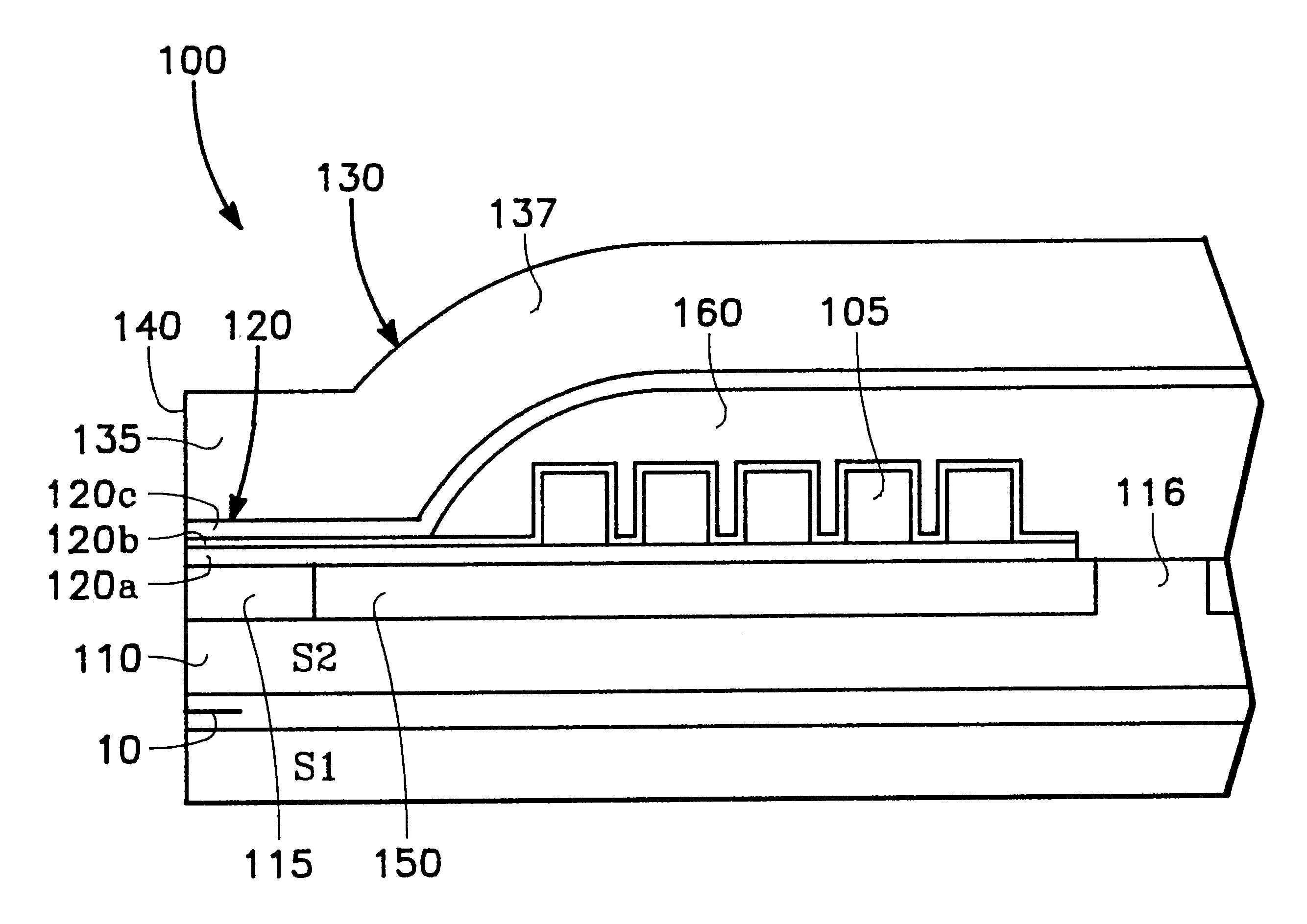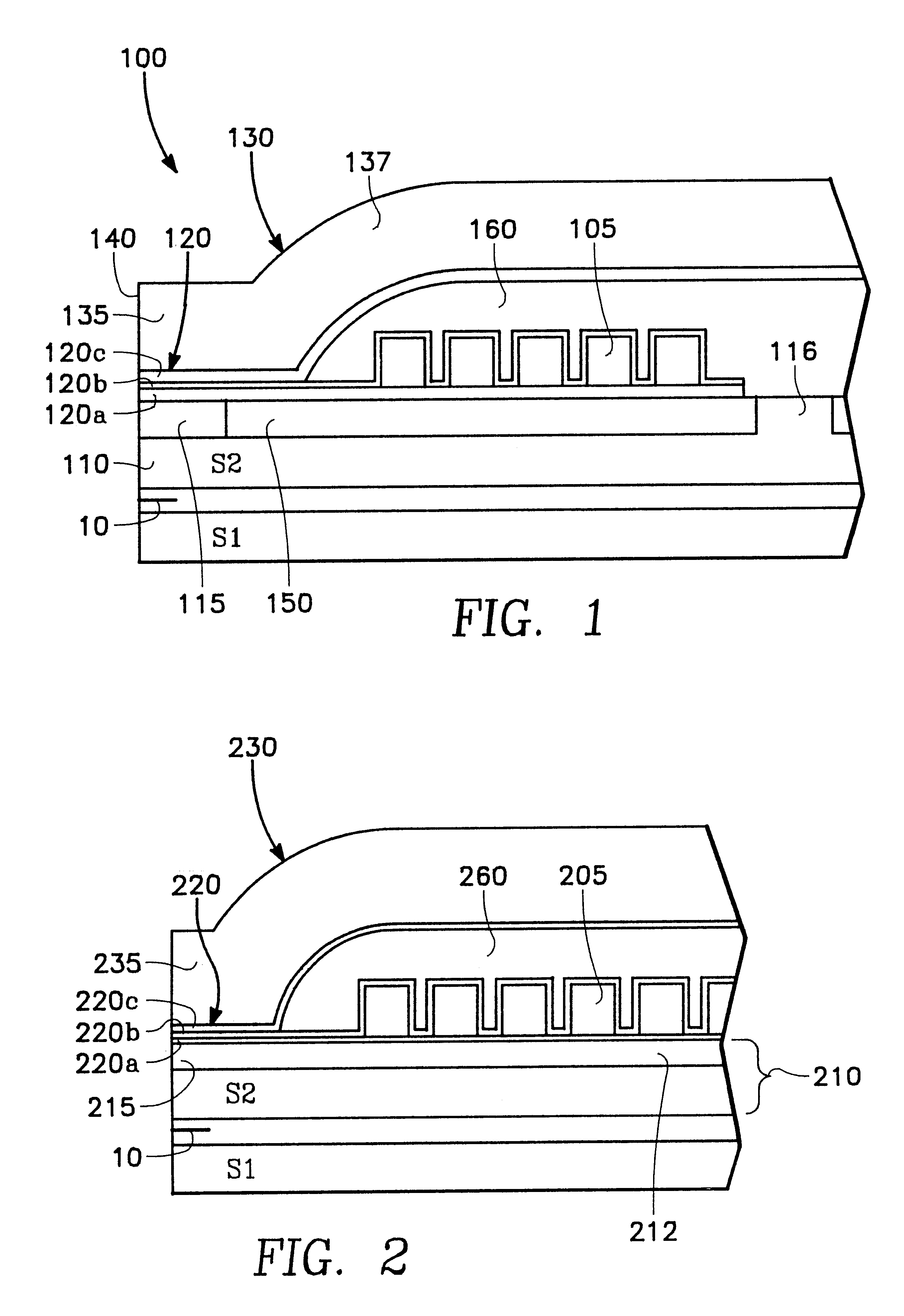Thin film writer with multiplayer write gap
a write gap and film writer technology, applied in the field of thin film writers with multiplayer write gaps, can solve the problems of increasing operating temperature and conductor resistance, increasing so as to improve the control of the thickness of the write gap, reduce the roughness of the surface of the coil, and improve the control of the write gap thickness.
- Summary
- Abstract
- Description
- Claims
- Application Information
AI Technical Summary
Benefits of technology
Problems solved by technology
Method used
Image
Examples
Embodiment Construction
FIG. 1 shows a partial cross-sectional side view of a thin film write head 100 in accordance with a preferred embodiment of the present invention. Such an embodiment can be formed over a substrate and over a previously formed read head 10 in a merged head or other configuration known in the art.
The embodiment of FIG. 1 has lower and upper pole structures 110 and 130. The lower pole structure 110 has a pedestal pole tip portion 115 which may be a separate structure, or may be integrally formed from the material of the lower pole structure 110. The upper pole structure 130 has an upper pole tip portion 135 at an air bearing surface 140 and a yoke portion 137.
The lower pole tip 115 opposes the upper pole tip 135 across a write gap 120. Conductor turns 105 form a winding which generates magnetic flux in poles 110 and 130, which is supplied across the right gap 120 at the air bearing surface 140 to write to magnetic media (not shown).
In this preferred embodiment, the write gap 120 is for...
PUM
| Property | Measurement | Unit |
|---|---|---|
| thickness | aaaaa | aaaaa |
| thickness | aaaaa | aaaaa |
| pole structure | aaaaa | aaaaa |
Abstract
Description
Claims
Application Information
 Login to View More
Login to View More - R&D
- Intellectual Property
- Life Sciences
- Materials
- Tech Scout
- Unparalleled Data Quality
- Higher Quality Content
- 60% Fewer Hallucinations
Browse by: Latest US Patents, China's latest patents, Technical Efficacy Thesaurus, Application Domain, Technology Topic, Popular Technical Reports.
© 2025 PatSnap. All rights reserved.Legal|Privacy policy|Modern Slavery Act Transparency Statement|Sitemap|About US| Contact US: help@patsnap.com



